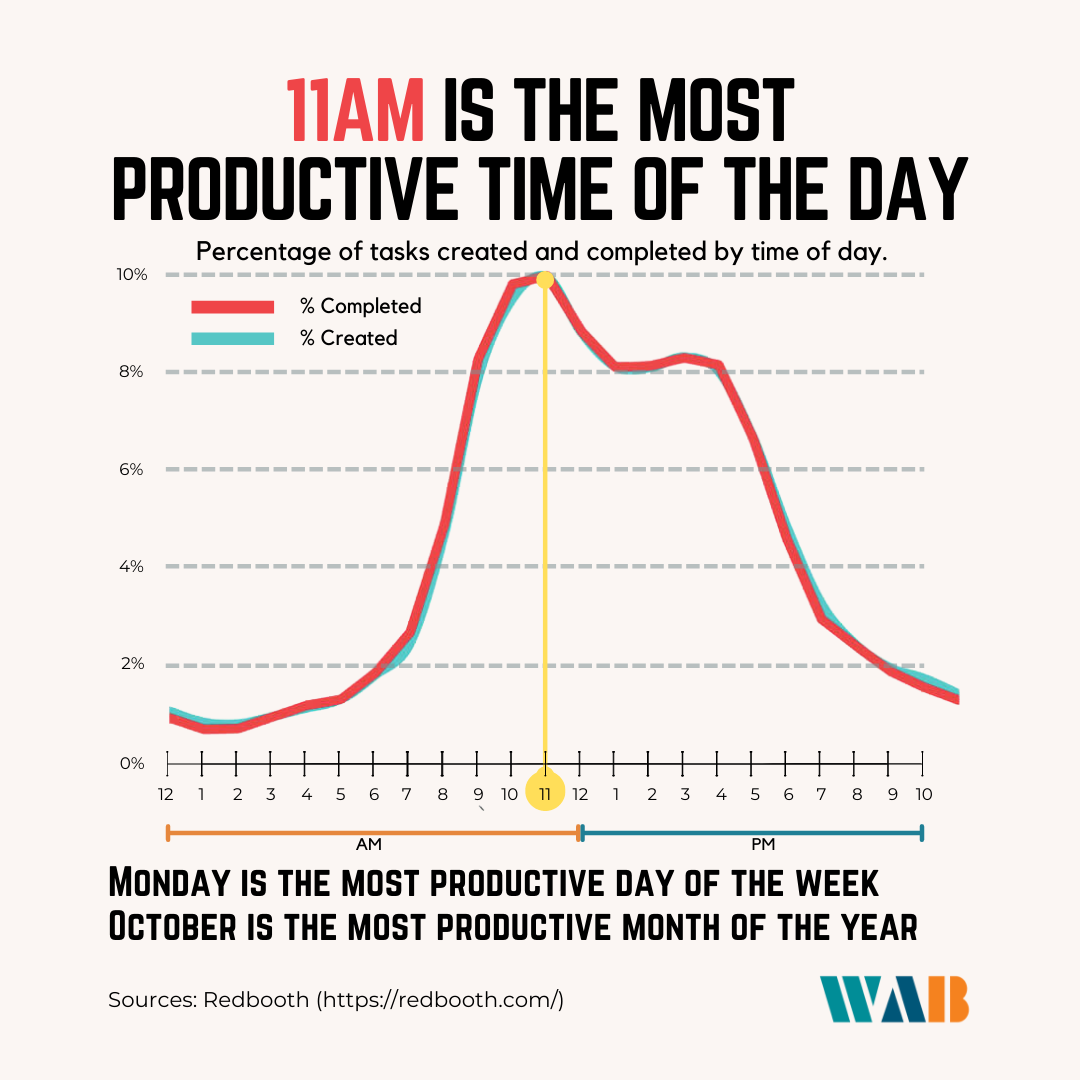Not every hour are created equal, here’s how to structure our schedule for optimal focus and results.
All of us spend a lot of time thinking about our productivity. When do we check our emails? What time of the day are best for scheduling meetings? When to go for that much needed team retreat? So, as we plan for the year ahead, is there a time in our calendars when can we maximise our output in the office? Turns out, Humans have a well-defined internal bio clock that shapes our energy levels throughout the day: our circadian process, which is often referred to as a circadian rhythm because it tends to be very regular.
Circadian rhythms are our internal clocks that tell our bodies when to get up, eat and sleep throughout 24-hour cycles. Many studies have found that work which syncs with our circadian rhythms results in greater productivity and less fatigue.
The Two Levers of Productivity: Sleep Debt & Circadian Rhythm
There are many methods and techniques that help you to enhance your well-being and performance. Two such methods are managing sleep debt and understanding your circadian rhythm, as they can unlock new levels of focus and exponentially enhance your productivity.
Sleep debt refers to the cumulative hours of sleep lost over a period of roughly two weeks, relative to your sleep need. Circadian rhythm is your internal timer that tells you when to be awake and when to be asleep.
Circadian rhythm is responsible for modulating our waking behaviour, affecting daily peaks and dips in energy. It will help us get our work done faster and more efficiently. It helps with our focus, attention and learning ability, all of which are critical to improving our productivity.
That’s why it’s so important for us to get a good night’s sleep—or at least to keep our circadian rhythm in sync with the natural world.
When Our Minds Are Sharpest
Zeniths for personal hustle and optimal productivity are Mondays before 11am in October, according to a study by California-based project management platform Redbooth.
Here’s what they found.
- On the typical day, we complete the most tasks (9.7%) at around 11AM
- After lunchtime, our productivity drops — and it completely plummets after 4PM
- We complete the most tasks at the beginning of the week, on Monday (20.4%)
- We’re least productive at the end of the week (Friday, 16.7%), and unsurprisingly, get virtually nothing done on the weekends (Saturday + Sunday, 4.7%)
- The highest percentage of tasks are completed in October (9.5%); the lowest percentage of tasks are completed in January (7.2%)

Energy Schedule
The most effective approach to optimising our sleep and waking patterns is to think of our body’s own energy schedule, or circadian rhythm. When we are properly aligned to our circadian rhythm, it supports optimal wellness and productivity.
Our body’s most active periods of day are when we are awake and alert, so it’s during these times that our body’s cells are programmed to be at their most active and efficient.
After our dip, our body naturally turns into the perfect resting place. It’s an awesome time to relax, recharge, and restore.
When we carry high-level fatigue, the dips are much worse than they normally would be. Having low or no sleep debt can help us have bigger peaks in your training.
So in short, there’s more to the science of sleep than just getting 8 hours of uninterrupted eye shuts every night. In fact, understanding our individual circadian rhythm will allow us to achieve our best results during our peak performance period.
Leveraging Your Circadian Rhythm for Peak Productivity
So, how can you put this information into practice? Well, we can look into these generalisations to begin with:
- Plan our most important tasks when we are at or near our peaks of focus (within an hour or so of noon and/or 6 pm).
- Schedule tasks requiring less focus within 90 mins of waking, early afternoon, and later at night.
When we are able to schedule our work in a way that best fits our energy schedule, that’s when true productivity occurs!
How Should We Structure Our Work Day?
Here’s a schedule of daily activities, (generally) optimised for productivity:
- Morning ramp-up: As our energy rises, plan the day ahead and check our email. Most people will drink coffee to shake off normal morning “grogginess”. Get sunlight with a walk or exercise.
- Morning peak: Use this time to work on your most important work and projects. Spend time working with your most critical decisions or with activities that require the most emotional energy.
- Afternoon dip: Schedule administrative tasks like emails or daily updates, or passive webinar watching for this energy lull, which is a normal part of our circadian rhythm (most people termed this as a hangover from lunch). On the weekends, this is a good time for a workout or household chores, and the best time for a nap.
- Evening ramp-up and peak: Knock out perhaps one more important task that requires a high level of focus or collaborative effort. Taking advantage of this peak will prepare ourselves for winding down.
- Evening wind-down: It’s so important to take a break from social media, work, emails, and other digital devices before bed. Take this time to relax. Slow down and enjoy life. That means doing relaxing activities, such as taking a hot shower or reading a good book.
Conclusion
There’s an entire library of books, hacks, articles, and gadgets aiming to boost productivity. In truth, none of this advice will help until you’ve minimised your sleep debt and aligned your activities with your circadian rhythm.
Note:
This article was inspired by Sylvia Fernandes, Founder of VIA Frontiers while we were preparing for her training programme, Selling with NLP in LearnWAB. We hope that everyone can be aware of their Circadian rhythm and schedules their activities based on this, thus resulting in improvements in their sleep patterns & energy levels. 🙂






